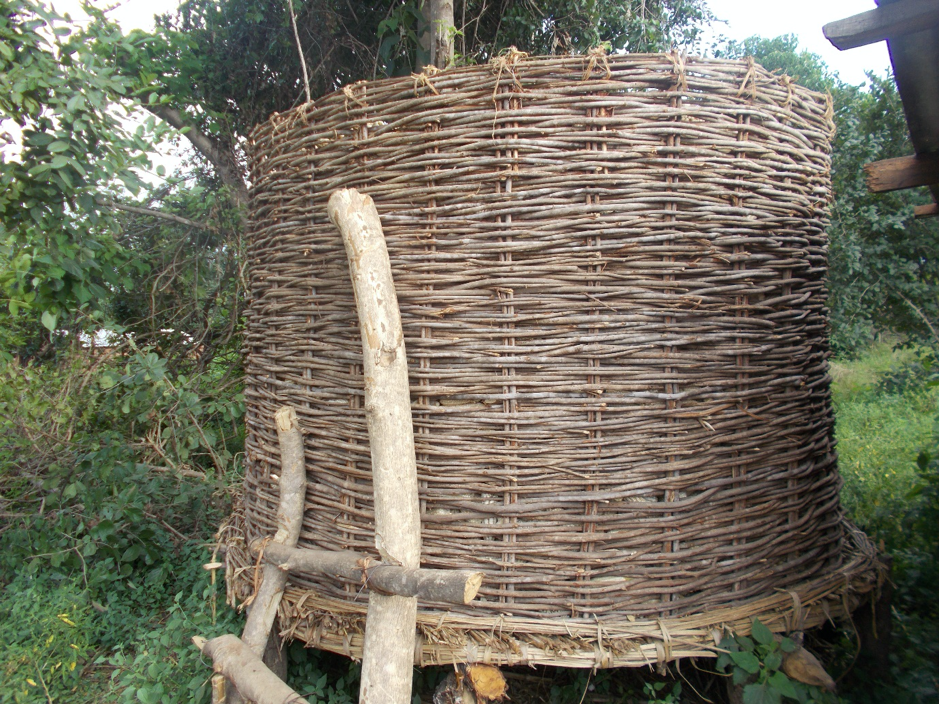The Challenge of Human-Wildlife Conflict in South Luangwa
By Besnart Manda, Conservation South Luangwa
Human-wildlife conflict is the conflict that exists between wild animals and humans. Here in Zambia, it usually happens when animals move out from the national park in search of food, which usually results in them raiding people’s fields and entering compounds. Elephants and lions are currently the major species causing conflicts.
With the help of Conservation South Luangwa (CSL), people living in South Luangwa are learning how to safely protect their food and livestock, so that both can thrive.
Residents in the area grow crops and keep livestock to sustain their living and improve their livelihoods. Conflicts have been increasing partly because more people are now keeping livestock, but also because human settlement has increased in recent years. People are attracted to the area and settle here with their animals because the land is fertile, but they are not always used to living alongside wildlife.
Ongoing human wildlife conflict means life can be hard for people, in the sense that they don’t understand or know how to deal with the problem. Sometimes they feel the only solution is to kill these “problem animals,” but they forget that protecting and conserving the wildlife is part of their role in the community, too.
To help people living close to the national park stay safe and protect their crops from elephants and livestock from lions, CSL’s Human Wildlife Conflict team implemented mitigation methods that farmers can use to reduce conflict. These mitigation methods include chilli bombing by chilli patrollers, electric solar fences, chilli burning, building of strong livestock enclosures, and building of concrete elephant safe granary stores.
An experienced farmer, Mr. Jebson Tembo used one of the mitigation methods last year and has found it extremely helpful in keeping his livestock safe.
“Building of strong livestock enclosures, which is one of the mitigation methods that was introduced by CSL, has really been helpful to me because my livestock are now protected and safe. I keep pigs, cattle, chickens, and doves, which are a source of income to me and my family.
"When I started keeping livestock, I used to have problems with wild animals like lions, leopards and hyenas. This was all because of the weak enclosures I used to build. It resulted in the livestock being killed every day. Nevertheless, the moment CSL told us about building the strong bomas (livestock enclosures), there was a reduction of livestock predation. I am not saying that lions or hyenas stopped coming completely, they still come, but it is on rare occasions that they kill and eat my livestock,” said Jebson.
Here is the picture of the strong enclosure that Jebson built earlier this year.
The enclosure was built with local materials for the purpose of keeping the cattle safe and protected from predators such as lions, leopards, and hyenas. The enclosure has proven to be the best mitigation method to use for the safety of the cattle, which he has been keeping since 2004.
“It is indeed a strong enclosure because my cattle are safe and secure in that no lions, hyenas or leopards have never tried to attack and kill them,” said Jebson.
Furthermore, people living in the valley use different methods to scare away elephants and keep their food in the place where elephants cannot eat it. Most of these mitigation methods have been mentioned above.
A concrete elephant-safe granary store is used to safely store staple food grains such maize, rice, and sorghum. It is very hard for an elephant to destroy this and get to the food. Unlike the traditional granary store, which some people are still using, the concrete granary store has proven to be strong and dependable.
Above is a picture of a traditional granary store, which has been an easy target for animals such as elephants to eat the grains. It cannot be compared to how strong and reliable a concrete granary store is. As a result people using this type of granary store must guard it the whole night to protect their grains, which is very tiresome and stressful.
This is a picture showing a concrete granary store that was built with support from Conservation South Luangwa.
It has been the safest granary store to keep the grains. Mrs. Phales Tembo is one of farmers who uses this type of a granary store to keep her maize.
“Since the construction of this concrete granary store, we have never experienced much conflict with the elephants compared to the way it was a long time ago when we were using the traditional granary store. Elephants used to come frequently when we were using traditional granary store but now they come less because they have nowhere to get food from,” said Phales.
She also thanked CSL for the construction the electric fence around her field. She is pictured below talking to CSL HWC Project Coordinator, Mr. Billy Banda.
“I really appreciate Conservation South Luangwa for the tremendous job they are doing. If it was not for them, my family and me would not have had a bumper harvest this year,” said Phales.
Another mitigation method that CSL introduced to help farmers in various communities of South Luangwa is the electric fence. Although is one of the best mitigation methods to prevent crop damage when combined with the chilli patrollers, so far it has not been implemented to many farming blocks due to the high cost of equipment. The fence is powered by solar and uses poly wire, which cannot be used for snaring. HELP PROVIDE RESOURCES NEEDED TO STOP CONFLICT





